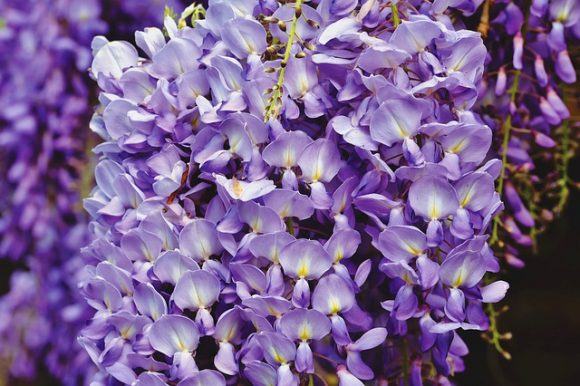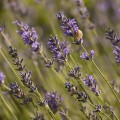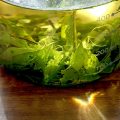- The Miraculous Shiny Bush Plant - January 18, 2021
- Colorful, Edible and Medicinal Celosia - January 10, 2021
- Radish, a Nutritional Power House - December 19, 2020
Wisteria is a genus of deciduous, rapidly growing climbers in the pea family. The plants are native to North America and Asia but are now cultivated in other parts of the world due to the colorful display of their flowers. In some instances, wisterias have escaped from gardens to become wildflowers which some regions consider noxious weeds.
[Disclaimer: Wisteria contains glycosides in varying amounts. The seeds and pods are especially high in these glycosides, closely followed by the leaves and can be quite toxic. The flowers are edible in moderation. Always make sure you know which parts of the plants are edible before eating them.]
These flowering plants are hardy and thrive in partial shade or full sun. Wisteria prefers to grow in well-drained soils and often requires training to support their weight at maturity. The plants are prized for their beautiful, pendulous, fragrant, pea-like blossoms that come out in spring and endure until summer.
Wisteria has alternate, pinnate leaves while the flowers grow in huge, drooping clusters. Blossoms are purple, white, blue and rose. Common species you are likely to see around include the American wisteria (wisteria frutescens), native to the US, Japanese wisteria (wisteria floribunda), native to Japan, and Chinese wisteria (wisteria sinensis), native to China.
In the language of flowers, wisterias symbolize youth, good luck, vitality, devotion, new births, and affection. Wisteria blossoms are edible and taste similar to sweet lettuce but with subtle notes of tangy grape and peas. The flowers can be eaten raw in a salad or used as a garnish. They can also be cooked and eaten as vegetables.
Wisteria flower and lemon cordial
Ingredients
1 medium-sized cup of fresh wisteria flowers
4 teaspoons of fresh lemon juice
4 tablespoons of sugar
2 pints of water
Process
Wash the blossoms and pluck out the petals
Mix sugar with water in a large saucepan and warm until the sugar has dissolved. When the sugar has dissolved, bring the mixture to a simmer for 3-5 minutes before removing from the heat. Allow the mixture to stand for several minutes to allow it to cool down.
Toss in the wisteria blossoms and add in the lemon juice slowly as you stir. Cover and allow to sit for 3-5 days.
Strain to remove the flowers, pour the mixture into glass bottles with a pop-top and place in the refrigerator.
The cordial has a magical, tangy taste which can be enhanced by adding in more lemon juice. You can also replace sugar with honey depending on your taste.
So you can grow wisteria for food, for ornamental purposes or both. Whichever approach you choose, wisteria will not disappoint.





